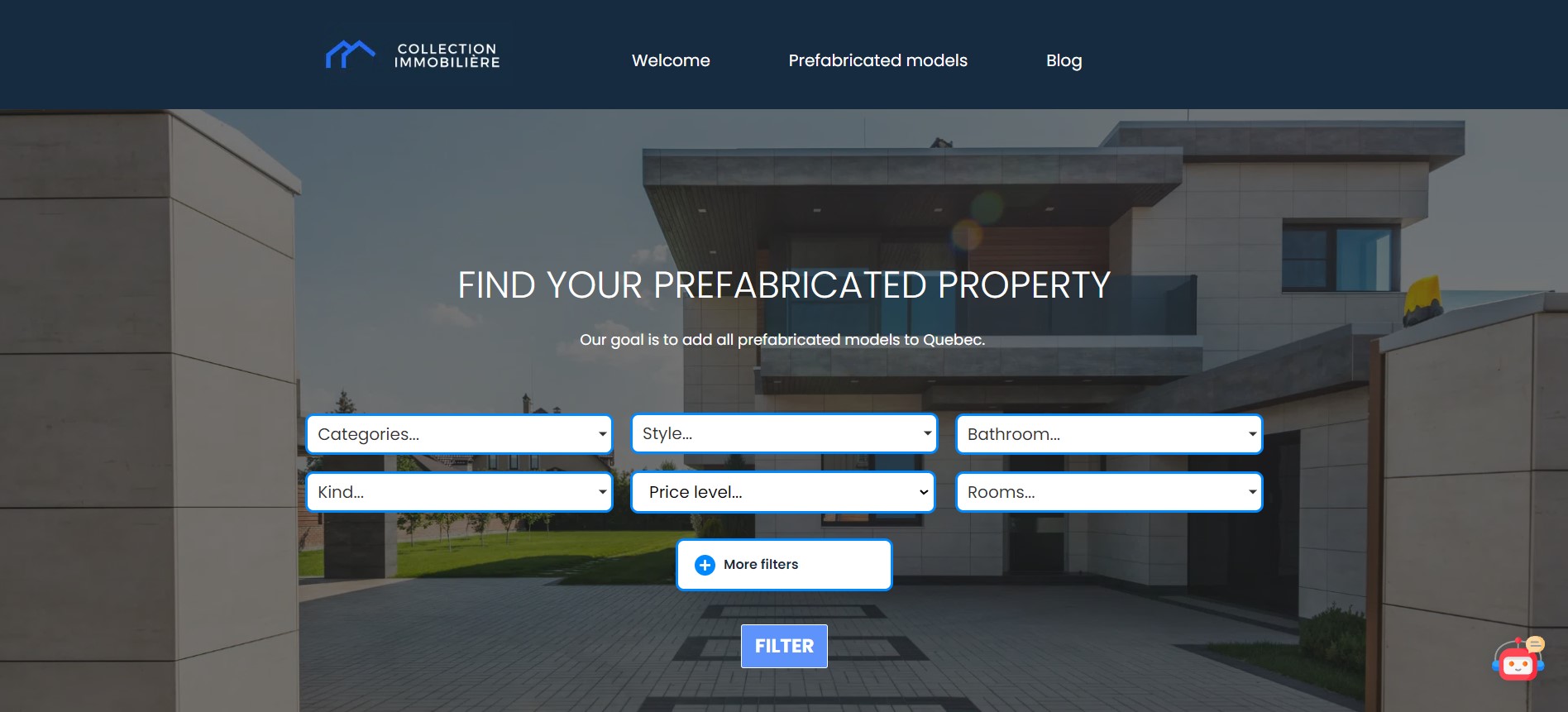In today’s fast-paced and competitive business landscape, effective collaboration has become more important than ever.
With teams often spread across different locations and time zones, harnessing the power of advanced technologies is crucial to overcome communication barriers and driving innovation.
Enter ChatGPT, a groundbreaking AI language model that is transforming the way teams collaborate, streamlining processes, and sparking creativity.
In this article, we’ll explore the myriad ways ChatGPT can elevate teamwork, from enhancing brainstorming sessions and providing expertise on demand to enabling efficient project management.
Get ready to unlock the full potential of your team’s collaboration with the cutting-edge capabilities of ChatGPT!
How Does ChatGPT Work?
ChatGPT is an incredible tool, powered by advanced artificial intelligence and deep-learning capabilities. As an AI language model, it is engineered to comprehend and produce text that closely resembles human communication, making it an indispensable asset in various applications.
ChatGPT, or Chatbot Generative Pre-trained Transformer, is an AI-driven language model developed by OpenAI based on the GPT architecture. It functions by utilizing deep learning techniques and large-scale data processing to understand and generate human-like text. The core components of ChatGPT’s functionality include pre-training, fine-tuning, and the Transformer architecture.
Let’s have a look at each core component:
- Pre-training: Before being fine-tuned for specific tasks, ChatGPT undergoes an extensive pre-training process. During this phase, the model is exposed to a massive dataset comprising text from various sources, such as books, articles, and websites. The model learns to predict the next word in a sentence by analyzing the patterns and structures within the dataset. This unsupervised learning process allows ChatGPT to acquire a broad understanding of grammar, syntax, and contextual relationships.
- Fine-tuning: After pre-training, ChatGPT is fine-tuned using a smaller, task-specific dataset. This dataset consists of carefully curated examples that guide the model toward generating appropriate responses to specific inputs. The fine-tuning process enables ChatGPT to hone its skills and provide more accurate and contextually relevant outputs.
- Transformer Model: The underlying architecture of ChatGPT is based on the Transformer model, which was introduced by Vaswani et al. in 2017. The Transformer model is designed to handle sequences of data, such as text, using self-attention mechanisms. These mechanisms allow the model to identify and weigh the relationships between words in a given input, enabling it to process and generate text more effectively than previous models, such as recurrent neural networks (RNNs) and long short-term memory (LSTM) networks.
By combining the powerful Transformer architecture with comprehensive pre-training and targeted fine-tuning, ChatGPT is capable of generating human-like text for a wide range of applications, including answering questions, providing information, generating creative content, and assisting in problem-solving.
What are ChatGPT’s Strengths?
One of the primary strengths of ChatGPT lies in its ability to understand the context. By processing the given information and considering the nuances of language, it can generate responses that are not only contextually relevant but also coherent and meaningful. This contextual understanding is crucial in providing accurate and valuable output, whether it be answering questions or offering insights on a specific topic.
Another significant advantage of ChatGPT’s deep-learning capabilities is the wide range of tasks it can perform. From providing information on diverse subjects to assisting in problem-solving, ChatGPT can be a one-stop solution for various needs. Its versatility extends beyond simple question-and-answer scenarios, as it can also be utilized to generate creative content such as articles, blog posts, or even poetry. This ability to create original content can be invaluable for businesses and individuals alike, opening up new possibilities for content generation and idea exploration.
In addition to its creative prowess, ChatGPT also excels in the realm of problem-solving. By analyzing the provided information, identifying potential challenges, and suggesting possible solutions, it can aid in decision-making processes and contribute to resolving complex issues. This problem-solving assistance can be particularly beneficial in collaborative settings, where diverse perspectives and expertise are required to navigate intricate situations.
The wonders of ChatGPT ultimately stem from its advanced AI and deep-learning architecture, which allows it to understand and generate human-like text in various contexts. By harnessing its vast capabilities, users can access a powerful tool that can transform how they communicate, create, and problem-solve, unlocking new opportunities for innovation and success.
How Can ChatGPT Streamline Team Communication?
In the world of collaborative work, clear and efficient communication is essential for successful outcomes. However, achieving this level of communication can be challenging, especially in diverse teams with varying levels of expertise and cultural backgrounds.
ChatGPT, an advanced AI language model, offers a solution to these challenges by seamlessly integrating into team communication platforms, ultimately streamlining information-sharing and decision-making processes.
Integration with team communication platforms allows ChatGPT to act as an intelligent assistant, providing team members with instant access to relevant information.
This capability can be especially helpful during meetings or brainstorming sessions, where quick access to facts, figures, or specific details is crucial. By reducing the time spent searching for information, ChatGPT enables team members to stay focused on their tasks, leading to more efficient collaboration.
In addition to simplifying information sharing, ChatGPT can also enhance decision-making within teams. By offering insights, suggestions, and alternative perspectives, the AI model can aid in the evaluation of different options, enabling teams to make more informed choices.
This improved decision-making process can contribute to more effective project execution and ultimately better results.
Another remarkable feature of ChatGPT is its ability to provide real-time language translation. In today’s globalized work environment, teams often comprise members from various countries who speak different languages.
Language barriers can hinder effective communication and lead to misunderstandings. By translating messages and conversations in real-time, ChatGPT helps bridge these communication gaps and fosters better understanding among team members.
This enhanced comprehension can lead to smoother collaboration and improved team dynamics.
As we’ve seen, ChatGPT can play a crucial role in streamlining team communication and facilitating a more effective collaborative environment. But its benefits extend beyond these aspects of teamwork.
One of the most impactful applications of ChatGPT lies in its ability to enrich brainstorming sessions, where creative problem-solving and idea generation are the primary objectives.
Let’s delve into how ChatGPT can enhance these sessions and unlock new levels of innovation and productivity for your team.
How can ChatGPT Elevate Your Team’s Brainstorming Sessions?
Brainstorming sessions are crucial for teams seeking to generate innovative ideas and creative solutions. ChatGPT, with its advanced AI capabilities, can significantly elevate these sessions by acting as a virtual team member, contributing fresh ideas and novel perspectives that may have been otherwise overlooked.
By integrating ChatGPT into brainstorming sessions, teams can benefit from the AI’s extensive knowledge base and unique problem-solving abilities.
As it offers suggestions and ideas, ChatGPT can encourage team members to think outside the box and consider alternative approaches to tackling challenges. This diversity of thought is essential for fostering innovation and driving teams to explore new possibilities.
Furthermore, ChatGPT’s capacity to generate human-like text can also help facilitate discussions by articulating ideas clearly and coherently. This clear communication can inspire team members to build upon those ideas, ultimately leading to more refined and effective solutions.
Another advantage of incorporating ChatGPT into brainstorming sessions is its ability to provide real-time feedback and evaluations. As team members propose ideas, the AI can offer constructive criticism or suggest improvements, helping to fine-tune and optimize the creative process.
If you’re intrigued by the potential of enhancing your team’s brainstorming sessions and want to dive deeper into this exciting world, we invite you to explore our comprehensive guide on creating the ultimate brainstorming room.
This guide will provide you with valuable insights, tips, and strategies to help you maximize the effectiveness of your brainstorming sessions by leveraging innovative tools and techniques.
ChatGPT can undoubtedly elevate your team’s brainstorming sessions, fostering innovation and creative problem-solving. However, its capabilities go beyond the brainstorming room.
It can also serve as a valuable resource by providing expertise on demand, ensuring that your team has access to crucial knowledge and insights whenever they are needed.
How Can ChatGPT Provide Expertise on Demand for Your Team?
ChatGPT, with its extensive knowledge base, empowers teams to access expert advice across a wide range of topics at a moment’s notice. This on-demand expertise not only leads to significant time and resource savings but also allows teams to make informed decisions and deliver high-quality work.
By leveraging ChatGPT’s wealth of information, team members can quickly find answers to questions, seek guidance on complex issues, or gain insight into industry trends. This ability to access expertise in real-time streamlines the learning process reduces the need for extensive research and enables teams to focus on their core tasks more effectively.
The breadth of ChatGPT’s knowledge encompasses various domains, from technical subjects like programming and engineering to industry-specific insights and best practices. This versatility makes ChatGPT a valuable resource for teams across diverse fields, equipping them with the information needed to tackle challenges and excel in their endeavors.
Let’s look at an example :
Imagine your marketing team is working on a new campaign to promote an upcoming product launch. During a brainstorming session, a team member suggests incorporating search engine optimization (SEO) techniques to improve the campaign’s online visibility.
However, not everyone on the team is familiar with the intricacies of SEO, and they need guidance on best practices and strategies.
This is where ChatGPT can provide expertise on demand. By integrating ChatGPT into your team’s communication platform, team members can quickly ask questions about SEO, such as “What are the most effective on-page SEO techniques?” or “How can we optimize our content for target keywords?”.
ChatGPT can then provide insights and recommendations based on its extensive knowledge of SEO best practices, allowing your team to make informed decisions and optimize the campaign for better online visibility.
This real-time access to expert knowledge can save your team the time and effort it would take to search for reliable information on their own, enabling them to focus on their core tasks and develop a more effective marketing campaign.
What Are the Limitations of ChatGPT’s Expertise?
While ChatGPT can undoubtedly serve as a valuable resource for providing on-demand expertise, it is essential to understand its limitations to make the most of its capabilities and set realistic expectations.
Let’s look at the most important limitations to be aware of :
- Knowledge cutoff: ChatGPT’s knowledge is based on the data it was trained on, with a cutoff date in September 2021. Consequently, it may not be aware of the latest developments, trends, or breakthroughs that have occurred since its last training update. Users should verify the information provided by ChatGPT, especially when dealing with time-sensitive or rapidly evolving subjects.
- Incomplete or incorrect information: As an AI model, ChatGPT may occasionally provide incomplete or incorrect answers. While it excels in understanding and generating human-like text, it is not infallible and may misinterpret context or provide inaccurate information. Users should cross-check critical information obtained from ChatGPT with trusted sources to ensure its accuracy and reliability.
- Subjective interpretations: ChatGPT’s responses may be influenced by the biases present in the data it was trained on. When dealing with subjective topics or opinions, users should be aware that the AI model’s responses may not always be neutral or objective. It is essential to consider multiple perspectives and critically evaluate ChatGPT’s input when dealing with subjective matters.
- Lack of specialized expertise: While ChatGPT’s knowledge base is vast, it may not possess the same depth of expertise as a human expert in a specific field. Its understanding of specialized subjects may be limited to general knowledge or common practices, and it may not be aware of niche information or cutting-edge research. When seeking specialized expertise, it is advisable to consult human experts or authoritative sources.
In summary, while ChatGPT offers an impressive range of expertise, it is crucial to recognize its limitations. By understanding these constraints and using the AI model as a complementary resource rather than a sole authority, users can harness ChatGPT’s capabilities effectively while ensuring that their decisions are well-informed and reliable.
While ChatGPT’s expertise can undoubtedly enhance various aspects of teamwork, its applications extend even further. One of the most valuable uses of ChatGPT is in the realm of project management, where efficient planning, organization, and execution are critical for success. Let’s explore how ChatGPT can contribute to more efficient project management and help teams achieve their goals in a timely and organized manner.
How Can ChatGPT Contribute to Efficient Project Management?
Integrating ChatGPT into project management tools can significantly optimize various aspects of managing projects, such as task delegation, deadline tracking, and resource allocation. This powerful AI language model can facilitate a more seamless workflow, ensuring that projects stay on track and meet their objectives.
For example, Zapier, a web-based service that allows users to automate tasks between various online applications and services, recently integrated ChatGPT into its cloud-based service. This means that by using Zapier, you can integrate ChatGPT with a lot of the most known apps like Gmail, Google Drive, Microsoft Word and Excel, Hubspot, etc.
By incorporating ChatGPT into project management tools, teams can benefit from its ability to automatically generate status reports.
These reports can provide a clear overview of a project’s progress, highlighting completed tasks, pending work, and potential bottlenecks. By offering this real-time visibility, ChatGPT enables project managers to make informed decisions and address issues promptly, ensuring a smoother project execution.
In addition to generating status reports, ChatGPT can also provide suggestions for improvement. These recommendations may include ideas for streamlining processes, enhancing collaboration, or identifying areas where resources can be better allocated.
By proactively offering insights, ChatGPT helps project managers optimize their team’s performance and improve overall project efficiency.
Furthermore, ChatGPT’s natural language processing capabilities can be utilized to assist with task delegation and deadline tracking.
For instance, it can automatically parse incoming messages, identify action items, and assign tasks to appropriate team members based on their expertise or availability.
By automating these processes, ChatGPT reduces the potential for human error and ensures that tasks are effectively managed.
How Can Businesses Develop Custom Solutions with ChatGPT?
ChatGPT’s remarkable versatility enables businesses to create tailored solutions that cater to their specific industry needs or collaboration requirements. By developing custom applications, organizations can facilitate seamless integration and enhance the functionality of ChatGPT within their workflows.
One potential use case for ChatGPT is creating customer service chatbots. Businesses can leverage ChatGPT’s natural language processing capabilities to develop AI-driven chatbots that can effectively handle customer queries, troubleshoot issues, and provide relevant information.
This not only improves customer satisfaction but also reduces the workload on human customer service agents, allowing them to focus on more complex tasks.
Another application of ChatGPT is AI-driven content generation. Marketing teams, for example, can use ChatGPT to generate creative content, such as blog posts, social media updates, or email newsletters.
By providing context and specific guidelines, businesses can ensure that the AI-generated content aligns with their brand’s voice and objectives, ultimately saving time and resources while maintaining consistent output.
These are just a few examples of custom solutions that can be developed using ChatGPT. Its adaptability and wide range of applications make it a valuable tool for businesses across various industries, helping them optimize their workflows, enhance collaboration, and drive innovation.
By harnessing the power of ChatGPT, businesses can unlock new opportunities and stay ahead in today’s competitive landscape.
Conclusion
In conclusion, the integration of ChatGPT into your team’s workflow has the potential to revolutionize collaboration and drive success in today’s dynamic business environment.
By providing real-time expertise, streamlining communication, enhancing brainstorming sessions, and enabling efficient project management, ChatGPT acts as a powerful ally in achieving your team’s objectives.
As we continue to embrace the capabilities of AI technology, harnessing the power of ChatGPT will undoubtedly help your team stay ahead of the curve, fostering innovation and ensuring long-term growth.
Embrace the transformative potential of ChatGPT and unlock a new era of collaboration that empowers your team to reach new heights of productivity and success.








